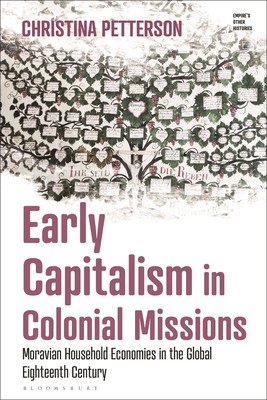
- We will send in 10–14 business days.
- Author: Christina Petterson
- Publisher: Bloomsbury Academic
- ISBN-10: 1350122084
- ISBN-13: 9781350122086
- Format: 15.6 x 23.4 x 1.4 cm, kieti viršeliai
- Language: English
- SAVE -10% with code: EXTRA
Reviews
Description
Drawing on unpublished archival material, this volume compares two Moravian missions, in Greenland and Australia, to demonstrate how their practices evolved over the 18th, 19th and 20th centuries as part of a globalizing world and economy. Delivering in-depth analysis of the far-reaching and deep-seated effects of missionary activity on indigenous communities and social relations, it also explores how the indigenous were 'othered' in empire, and the role missionaries played in this process.
Petterson provides an insight into the lives of indigenous peoples, and the missionaries who lived amongst them, at a time of changing identities and socio-economic change. Analysing how missionary practice developed over this period, it also demonstrates how attitudes to and engagement with indigenous peoples transformed. Standing outside of national and imperial boundaries, and ambivalent about the political notion of imperialism and colonisation itself, nonetheless missionaries functioned in parallel with colonial structures, and were part of a broadly culturally colonial mission. On the outskirts of imperial organisation, they were often a crucial part of colonial practice. This book examines both missionaries and indigenous peoples as 'others' in imperial systems through the economic and cultural practices of their spiritual colonialism.EXTRA 10 % discount with code: EXTRA
The promotion ends in 21d.22:58:57
The discount code is valid when purchasing from 10 €. Discounts do not stack.
- Author: Christina Petterson
- Publisher: Bloomsbury Academic
- ISBN-10: 1350122084
- ISBN-13: 9781350122086
- Format: 15.6 x 23.4 x 1.4 cm, kieti viršeliai
- Language: English English
Drawing on unpublished archival material, this volume compares two Moravian missions, in Greenland and Australia, to demonstrate how their practices evolved over the 18th, 19th and 20th centuries as part of a globalizing world and economy. Delivering in-depth analysis of the far-reaching and deep-seated effects of missionary activity on indigenous communities and social relations, it also explores how the indigenous were 'othered' in empire, and the role missionaries played in this process.
Petterson provides an insight into the lives of indigenous peoples, and the missionaries who lived amongst them, at a time of changing identities and socio-economic change. Analysing how missionary practice developed over this period, it also demonstrates how attitudes to and engagement with indigenous peoples transformed. Standing outside of national and imperial boundaries, and ambivalent about the political notion of imperialism and colonisation itself, nonetheless missionaries functioned in parallel with colonial structures, and were part of a broadly culturally colonial mission. On the outskirts of imperial organisation, they were often a crucial part of colonial practice. This book examines both missionaries and indigenous peoples as 'others' in imperial systems through the economic and cultural practices of their spiritual colonialism.

Reviews